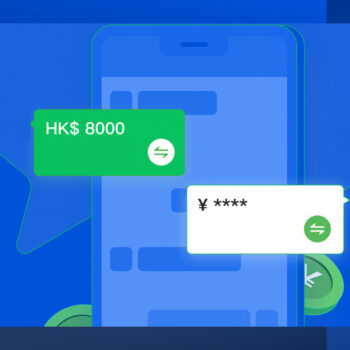The company shares marketing insights and trends to help luxury brands reach consumers in China more effectively
Consumers in China are more digitally entrenched than ever. Average mobile internet usage clocked in at nearly six hours a day in 2022, around 30 percent higher than the global average, and the figure continues to rise. Navigating through the endless churn of online offerings, Chinese consumers have become discerning connoisseurs of enriching, integrated content that seamlessly satisfies their appetite for social interaction, entertainment, authentic information and engaging retail experiences. The changing landscape is a reflection of rapid digital transformation in recent years to enhance customer experiences and drive business growth.
Kiki Fan, General Manager of Industrial Sales Operations, Tencent Marketing Solution, provided valuable insights into China’s fast-changing digital market and evolving consumer behaviors in a keynote speech on June 21 to leading advertisers at the prestigious Cannes Lions International Festival of Creativity in the south of France. Fan also shared new trends for strategies in the digital space that help brands achieve successful marketing results.

“Accelerated growth in online engagement and purchasing is driven by continuous innovation in China’s digital ecosystem. It is unique in its extraordinary connectivity and diversity, with an array of different media and engagement formats,” Fan explained.
“Taking Tencent’s Weixin platform as an example, we have progressed a long way from being a promotional channel to becoming a business enabler, where brands can combine their websites featuring advertising and sales services with social media to interact directly with customers in an integrated manner.”
Some noteworthy new trends in China’s digital marketing space highlighted by Fan include a shift towards online live streaming of events that breaks the boundaries of location, capacity and time; digitalizing offline content that fuels social interaction; creating immersive personalized experiences in the metaverse; and launching new formats such as vertical video or interactive content. More brands are also leveraging Weixin as a key business platform, setting up ‘Always-on Mini Program Stores’ to provide a diverse range of products that are available all year round. The incorporation of technology like augmented reality helps to make the shopping experience more visual and realistic. Fan summed this up with a concept dubbed “brand.com 2.0,” which signifies that brands can leverage all the consumer touchpoints to complete a seamless online journey.

Other than substantiating the points made by Fan on the latest digital marketing trends in China, the TMI report pointed out that luxury brands would find opportunity in three key consumer segments: heavy spenders, Gen-Z and customers in tier two and below cities. Together, they are forecast to account for 70 percent of future growth in the sector. Furthermore, digital channels would be an indispensable part of any marketing strategy as they influence over 90 percent of all luxury purchases in the country. More significantly, 46 percent of all luxury transactions are now completed online, compared with only 29 percent in 2019.
Overall, the report notes that the outlook is promising for the luxury market in China. Year-on-year, Chinese consumer spending in the sector is expected to grow a robust 15 to 20 percent in 2023 to RMB550 billion (US $77 billion). Some 80 percent of that spending will be domestic, due in part to prolonged constraints in international travel. More telling though, is a shift in consumer preference to buy at home as a result of improved product range and supply, better service and narrowing price gaps. Brands are also fostering stronger bonds with domestic customers by incorporating Chinese elements and themes in their products and communication.
The report finds that Chinese luxury customers appreciate diverse, innovative marketing approaches that resonate and connect with them directly. They consider luxury brands that incorporate traditional elements to be more genuine. Tailor-made campaigns for the China market such as those celebrating Lunar New Year and Chinese Valentines Day have been particularly well-received. Creativity, energy, use of local celebrity endorsers, application of new technology such as virtual idols, integrated online/offline activities and collaboration with non-luxury brands all help boost the appeal and enhance a brand’s standing, especially among younger Chinese consumers.
Social commerce is a new buzzword for both luxury and non-luxury brands charting a roadmap for growth in China’s vast and diverse market. Digitally advanced consumers are demanding seamless online customer journeys that connect them across multiple touch points. As well, they seek ever more innovative and sophisticated content that resonates deeply and directly. In the rapidly changing digital landscape, marketers may turn to next-generation intelligent tools to more precisely analyse consumer behavior and maximize the efficiency of marketing efforts.
*Due to differing consumer behavior and tariffs, the report covers only consumers in Chinese mainland. Consumer behavior in Hong Kong, Macau and Taiwan are not tracked. Research Sample: 2,700 luxury brand shoppers between April 2022 and April 2023





